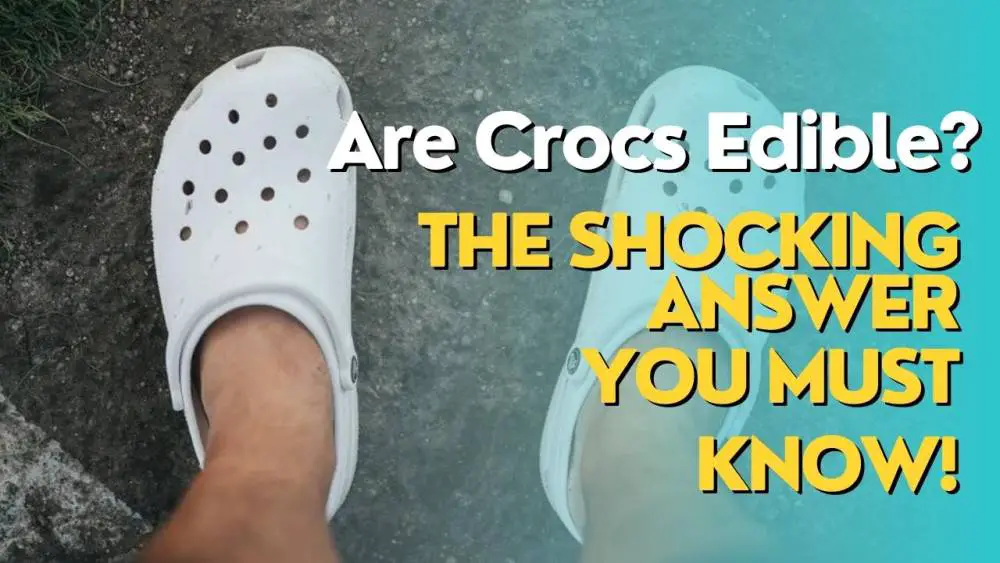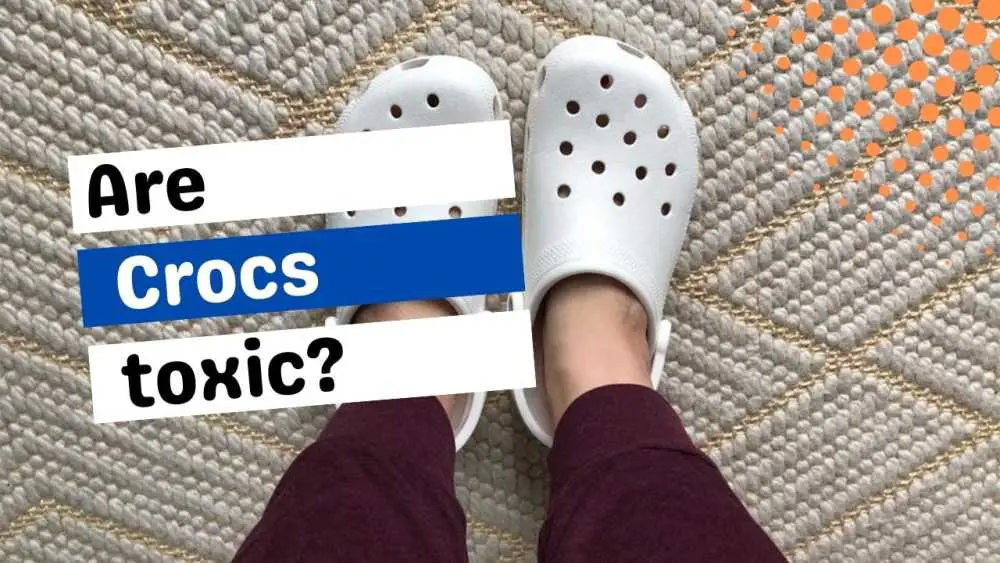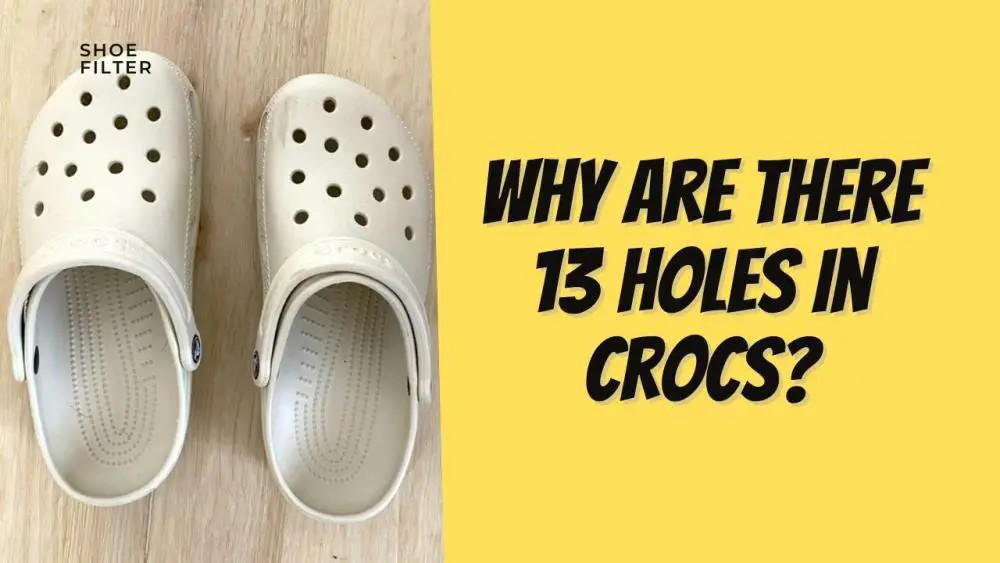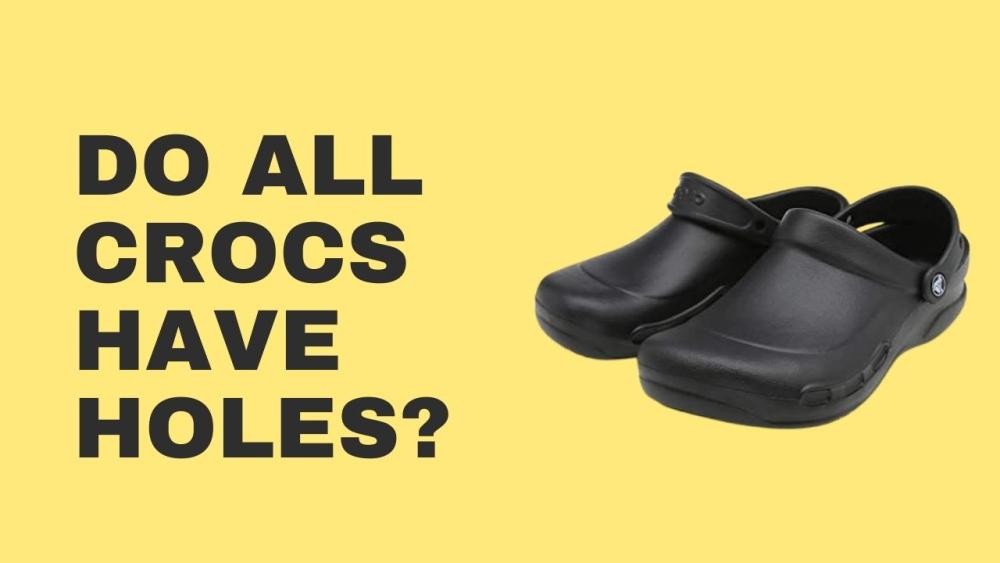As crazy as it may sound, people often ask this question: Are crocs edible? Well, despite the organic elements present in the construction, the answer is a no.
Crocs are made using some special organic elements, making them more or less okay to eat. But from a medical perspective, that's something never suggested.
Despite the use of non-harmful, non-toxic elements in the construction, shoes will always have different chemical compounds than your regular foods, which would make it extremely challenging for your stomach to digest them properly.
Plus, you may also suffer from excessive bloating and other similar digestive issues as your stomach isn't adapted to digest shoes.

See also: Shoes Like Crocs But Aren't
Are Crocs Edible?
No, Crocs aren’t edible, that's a disadvantage you need to keep in mind.
In the coming segments, we'd be talking about the organic elements crocs come equipped with and whether or not you'd be able to eat them by any chance.
Can You Eat Your Croc?
No, these are shoes that are meant for wearing outdoors, and it's not at all medically safe to eat your shoes. Some claim crocs to be edible, but that can be done only in certain circumstances.
If you're stuck at a place like a desert or a barren island and you have no other food alternatives, you may want to take a bite of your croc. But in a regular setting, eating your shoes wouldn't be the smartest thing to do.
The reason why it's a big fuss is the organic construction of the entire Crocs line. It isn't important whether they can be eaten (nobody would want to eat a shoe anyway), but the main point that makes such questions so popular is to signify the safer building process.
Why Are Crocs Banned?

Some hospitals and medical authorities have banned the health professionals' intense obsession with Crocs because they don't offer the required safety against sharper elements.
If you didn't know, crocs are one of the most popular shoes worn by healthcare professionals regularly. They're tremendously easy to maintain, which helps them clean and sterilize crocs effortlessly.
Crocs are lightweight, which offers better support for people who need to work on their feet for a long duration at their job; this also attracts medical professionals.
But the ban came into effect prohibiting this exceptionally user-friendly footwear, which made it difficult for both the doctors and nurses.
As they need to deal with sharp objects like surgery blades, knives, scissors, and many similar instruments, dropping one on the feet can cause serious injuries. Plus, one can also step on sharp objects, and crocs made using rubber-like materials can be pierced through, making them a bad pick for such environments.
Related post: Are Crocs Bad For Your Feet
How Are Crocs So Expensive?
Crocs can seem overwhelmingly expensive due to their Croslite construction and intensely comfortable design! Croslite isn't your regular cheap, substandard plastic or rubber material. It's far more advanced and isn't toxic like the previously mentioned elements.
Being a non-toxic, organic material and offering superior impact protection with advanced cushioning, the Croslite is far more costly than its rubber or plastic counterparts.
Now, one of the main features of Crocs is that they use this comparatively sophisticated and better-performing material in almost all sandals and shoes.
As a result, the production cost would naturally go up.
The transportation and other sourcing costs would also add to the production cost, which is already high and make them a bit too pricey.
However, most of the users claim Crocs to be worth the price.
Are Crocs toxic?

No, Crocs aren't toxic because they use two chief elements in their shoes, Croslite and Polymer, both of which are known for their non-toxic, environment-friendly properties.
It's one of the major selling points for Crocs. Right now consumers are more concerned with where and how their products are made, and if they're toxic or environment friendly, manufacturers too have to adapt to this pattern. Crocs also have adapted the same sustainable business approach for their consumers.
Are Crocs Made From Crocodile Skin?
No, they don't use crocodile skin in the production. As mentioned, Croslite and Polymer are the main elements that make their shoes.
However, it's pretty natural to ask the question since Crocs uses a crocodile snout logo for their branding, and their name reflects that. That can make some people wonder whether they use crocodile skin in construction.
They use that logo and the name because when one of the founders looked at their shoes from the side, it immediately reminded him of a crocodile as they, in fact, resemble a crocodile snout pretty well. Hence, they came up with the name and gave birth to the iconic crocodile logo.
What Were Crocs Originally Made For?
Crocs first started their appearance as boating shoes. In fact, they named their first set of shoes "Beach," and they were showcased in a 2001 boat show in Florida!
After their appearance, they were an instant hit among the consumers. People from all walks of life were keen to get Crocs, but mostly the outdoor boys, travelers, and sports enthusiasts were the main customer groups.
They've sold an unbelievable 300 million units since their inception!
Can You Swim in Crocs?
Yes, you can certainly use them for swimming or any water-related activities. They were, in fact, designed to be quality boating shoes. Plus, they use rubber-like materials in the construction, which are tremendously easy to clean. Unlike leather shoes, crocs don't deteriorate in wet conditions either.
If crocs are wet, you can dry them up easily by just standing them upwards.
You should keep in mind that the closed-toed crocs can get water stuck inside while swimming. This can make swimming a bit difficult.
Plus, if you swim without the straps on, they may come off due to the water pressure. So, two things should be considered while using them for swimming. First, you should wear holed clogs so water can swiftly travel outside for easy swimming. Second, put the straps on before swimming.
Why Are There 13 Holes in Crocs?

Most of the Crocs' holed variants have 13 holes on top to give your foot better ventilation and moisture protection. Interestingly, you can use these holes to light up your Crocs with stunning designs.
Crocs have released their new add-ons, called the "Jibbitz Charms." These are specially designed small elements you can attach to your Crocs.
The 13 holes can house 13 different charms that can add a new level of style and let you design your shoes in a more personalized fashion. They can also make you stand out in an ordinary gathering and deliver a sophisticated fashion statement that everyone loves!
However, the reason why they use that exact number can be up for assumptions.
Do All Crocs Have Holes?

No, not all the Crocs come with holes. However, holed designs are the most popular, and they're what defines a typical Crocs.
Apart from holed designs, Crocs produce almost all sorts of sandals and shoes out there. You can find laced shoes as well as flip-flops.
They also manufacture the closed-toe designs of the same holed ones. They look exactly the same, but the closed-toed ones don't come with holes.
However, the holed ones are better outdoor performers as they'll keep your feet dry using the exceptionally well-designed ventilation holes.
They can be an ideal footwear choice for wet seasons, as they've got this fantastic capability of draining out water from all sides.
What's the Problem with Crocs?
One of the problems I faced while using Clogs, in general, is their lack of heel support in general. If you look at a typical clog construction, you will find that they come with a half-open design, meaning the rear part of the shoe is always open.
So, I had to grip the entire shoe with my toe. It wasn't that difficult, but they can come off easily while running or doing highly physical activities.
Although they offer a back strap, it's often flimsy to a certain degree. As a result, you may not get the desired rear support you want.
This tendency can also develop toe and nail issues in the long run.
Another area where they tend to underperform is their looks. The very appearance of clogs can be a little off-putting. The unorthodox design has made them completely unable for professional uses.
Bottom Line
Crocs are certainly one of the most popular shoes out there right now. Coming with different utility features, they're the ultimate workhorses you can go ahead with for a durable alternative.
Made using safe, non-toxic Croslite and Polymer Crocs can certainly offer a healthier footwear experience any given day and be regarded as one of the best environmentally friendly shoe options.
But are crocs edible? The answer is still no.
The non-toxic and organic material will easily dissolve in the environment without ruining the soil or the water system, but that doesn't necessarily mean they'd make a healthy dinner.
But if you're stuck on a deserted island without any food, Crocs would be a better option than trying out your own muscles!
Related post: Are All Crocs Non-Slip Shoes

